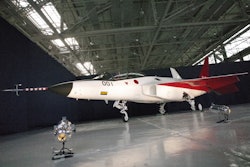A lot of articles are being written today about the digital factory and other disruptive technologies. The cloud is coming to manufacturing! Mobile collaboration will be everywhere! 3D printing will take over the production floor!
However, according to a recent Gartner report, most global manufacturers respond to these predictions by shrugging their shoulders and going on with their business. Only three percent of manufacturers say they are using the Cloud for manufacturing. 3D printing is certainly filling an important market need, but it’s not about to take over the manufacturing floor for several years. Despite the advances in areas like robotics and computer 3D design, few if any factories are truly digital from beginning to end.
So are these disruptive technologies really coming, or is it all just hype and buzzwords? The surprising answer is, many of them are here already — whether manufacturers realize it or not.
Building the Foundation
Virtually all of the predictions about these coming revolutions are related to one idea: the digitization of manufacturing. This is a trend that is clearly well underway, and not because manufacturers are anxious to employ the Cloud or 3D printing, but because digitization simply makes powerful business sense.
For example, manufacturers of all sizes are using computer-aided design and have been for some time. These CAD systems now contain rich 3D models that can and should be leveraged downstream to drive production efficiency, quality, process improvement, and much more. However, this has proven difficult to do with so many legacy and disparate systems on the production floors. That’s one reason why manufacturing executives say their top two operational challenges are to “break down silos of organizations and departments” and link their “disparate systems and databases that exist across plants and the enterprise.”
One way they’re breaking down the silos is by replacing legacy execution systems with Manufacturing Operations Management (MOM) systems that provide a unified, standardized platform for factory execution across the enterprise. Among the many benefits of this transformation is the fact that it provides the basis for leveraging CAD models into manufacturing processes, and provides a “digital thread” through all manufacturing operations. While only 23 percent of manufacturers had implemented a MOM platform by 2014, 21 percent plan to do so this year. Then there’s the Internet of Things — a very real trend as well.
What all this means is that the digital foundation for true transformation is rapidly coming into place. With design and manufacturing digitized and integrated, and computer technology built into almost everything, the disruptive technologies that are predicted are well on their way to reality.
Let’s look at four predictions for the future that are actually being implemented today in manufacturing enterprises.
The Cloud
Gartner recently noted, “the definition of ‘cloud computing’ has proven to be evasive. Several of the companies interviewed have very sophisticated, centrally hosted solutions that serve several plants; the difference between this and a cloud solution becomes blurred.” So, despite the low adoption rates of “pure” cloud usage in manufacturing operations, if this definition includes a Center of Excellence (COE), then adoption rates are actually much higher. COEs are now recognized as a best practice, and are in use in a growing number of global manufacturing enterprises.
True, a COE is not outsourced to a Cloud vendor; rather it is controlled and operated by the manufacturer itself. Nevertheless, the COE is off-premise, and provides similar advantages as a Cloud deployment. It enables the centralization of planning and drives greater collaboration between management and factory execution.
According to IBM, the purpose of a COE includes documenting best practices, building a repository of reusable process assets, and providing governance for the process lifecycle. As manufacturers adopt an increasingly global perspective, the role of a COE will only grow in importance.
Social
You might think that social technology is limited when it comes to manufacturing, but quite the opposite is true. Social applications, referred to as “collaborative” tools, are gaining traction within the industry.
Take applications like SharePoint and Lync. These and other commercialized instant messaging systems allow people across functions and locations to collaborate in real time. Increasingly, applications like these are being embedded in process workflows, with alerts and triggers that enable experts to instantly address a problem occurring hundreds of miles away. Social is just another word for digital-enabled collaboration, and it’s very much a reality in today’s manufacturing enterprise.
Mobility
A few years ago, mobile was barely present in manufacturing. Today, some 80 percent of manufacturers have or are developing mobile applications.
There are several reasons for this. For one, new generations of workers expect to use mobile wherever they go. For another, with so much of manufacturing operations becoming digital, there is no reason not to extend applications to mobile users. Finally, mobile applications are easy to justify for the productivity gains they produce. Simply put, when workers are not tethered to their desks or workstations, they can make faster decisions.
A good example of this is the French company Alstom Transport, a provider of products and services for railways. To provide greater visibility, synchronization and control across its global manufacturing processes, they used tablets linked to their MOM platform. This fed live information to workers, including the latest process plans and work instructions, contextualized and presented in an appropriate way for each user. When there’s a problem, workers on the production floor can communicate instantly with supervisors in just a few taps on their tablet. At any time, the production supervisor can aggregate the day’s activities and generate up-to-the-minute status reports. The company says they now have more consistent data and the ability to react quickly.
Big data
As the digitization of manufacturing grows, so does the amount of useful data being generated. Manufacturing operations produce vast amounts of data and enterprises are now looking to harness that information. One way they’re doing it is through Manufacturing Intelligence (MI) applications.
MI applications have existed for some time, but have been hampered by the fact that data was being gathered from disparate systems, making it difficult if not impossible to deliver accurate and reliable data in a timely manner. However, with the adoption of standardized MOM platforms, manufacturers can now gather and harness information in near real-time from across the enterprise. For executives hungry for visibility into their operations, this is a powerful tool and a competitive advantage.
As far as big data is concerned, MI applications are only the tip of the iceberg. We can expect enterprises to start mining this data in myriad ways to discover insights that will help them improve many aspects of manufacturing.
Conclusion
The digital factory is more than a buzzword and is rapidly becoming a reality in manufacturing. Even companies that are not specifically aiming to accomplish it are moving in that direction, simply because the business drivers are too powerful to ignore. Some enterprises are moving there one step at a time, adopting COEs or mobility applications as the need arises. A few, like Lockheed Martin and Proctor & Gamble, have launched major initiatives to create fully digital operations.
Rather by plan or by circumstance, manufacturing enterprises are adopting and expanding their use of digital technologies, and in the process they are disrupting the marketplace and forcing others to follow suit. The disruptive technologies of the future are here today, and for global manufacturers it’s a matter of adapt or be left behind.
Philippe Bartissol is Vice President of Industrial Equipment at Dassault Systèmes.






















